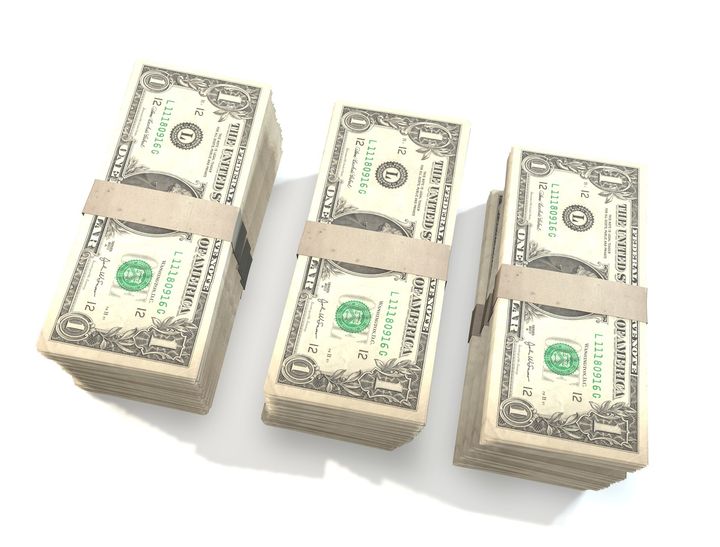
Did you know that, according to NerdWallet, the average American will have $2,000 in savings by end of 2016? So… How the heck did I manage to save ten times that amount—in a year? (And, more importantly, how can you do the same?)
For the sake of transparency, I’ll mention right away that I didn’t live in the United States at the time. I lived in Macau, the home of lavish, heavily perfumed casinos. However, what I did is still feasible in North America (and I’ll prove it to you a bit later on).
All you have to do is scrap your budget. And I don’t mean put it in your drawer for safekeeping—I’m saying feed it into the shredder and bid it adieu.
Here’s how you can save a substantial amount of money without keeping track of every single expense:
Know exactly what’s coming in.
Between August 2015 and June 2016, I lived and taught English in Macau. I made $3K a month, plus $600 for teaching extra classes. I received bonuses in the form of an extra month’s salary in December and February, and I was also paid an extra $2,400 in January and April.
Fixed monthly income: $3,000
Extra class payment: $600
Sum of bonuses: $10,800
Determine your fixed expenses.
The cost of living in Macau isn’t as low as you might expect. I paid $1K a month for a tiny studio apartment. Considering I paid $280 when I lived in Montreal, and my employer in Seoul paid my rent in full the year prior, $1K each month was a hard amount to digest at first.
I paid $57 a month for my phone bill, and electricity fluctuated between $20 and $80.
I don’t own a car, and taking the bus cost 40 cents each way. (OK, that definitely made up for the high rent costs!)
Rent: $1,000
Phone Bill: $57
Electricity: $20–$80
Internet: $57
Set an allowance.
To be able to determine your monthly allowance, subtract your expenses from your income to find your net income. As you can see, I was netting approximately $2,400 each month.
Based on my net income, I decided that my allowance would be $500 each month. With that amount, I would have enough for groceries, public transport, and whatever outings I wanted. (Want to hear something great? I never even used up the whole $500.)
Start off conservative with your allowance. If you realize that whatever amount you’ve chosen isn’t enough, boost your allowance next month. Worse comes to worst, you could always dip into your savings account (more on that in a bit).
Transfer the rest of your money (into a high-interest savings account).
And don’t touch it unless you really need it.
So, in point one, I outlined what I made. Each month, I would transfer $1,900 into my second account. Remember the bonuses I mentioned? I also transferred them over to that second account.
So, if you do the math, you’ll see that my savings eventually added up to over $20K. ( I used some of it to pay off debt, too.)
An important point: Never let debt prevent you from saving. I personally preferred lump-sum payments for my debt. I would send over money to my Canadian account, and then I tackled the debt with the highest interest first.
If you have debts, while you’re slashing huge chunks of money off your income to go into savings, determine how much of that you’ll allot for debt repayment. Whether it represents 50 percent or 30 percent of your savings, put that amount towards the debt with the highest interest rate.
So that’s how I managed to save without keeping track of every single expense. I didn’t set aside $5 a week specifically for a latte or $20 a week for groceries—instead, I gave myself an allowance and stuck to it. My method took away the stress that can sometimes be associated with budgeting, and I still managed to save a lot.
I also didn’t cut out all the good things. I still went to a Lil Jon concert (it was amazing, by the way!). I still visited three countries over the holidays. I still treated myself once a week to great vegan food and Starbucks on Fridays, and I still bought clothes. And even with all that, I never went over my $500 allowance—well, except during the holidays. The cost of my plane tickets did exceed $500. However, since I never spent more than my allowance each month, it all balanced out.
We can live on a whole lot less than we think, without the feeling that we’re depriving ourselves. Granted, I don’t have a car or a mortgage, but even if you wanted to save half of the amount I did, I truly believe it’s possible.
To bring my point home, here’s a case study.
North American case study
Meet Sara. She’s a 20-something-year-old content marketer who lives in Canada. Her salary and expenses are therefore expressed in Canadian dollars.
Monthly income: Can$2,704
Expenses
Car note: Can$367
Insurance: Can$84
Rent: Can$500
Student loan: Can$180
Monthly credit card payment: Can$50
Phone bill: Can$65
Internet: Can$60
Appliances: Can$55
Bed: Can$11
Minimum line of credit: Can$40
Minimum credit card: Can$25
Total: Can$1,437
Income minus expenses = Can$1,267
Each month, Sara could transfer Can$767 into a high-interest savings account, while still keeping Can$500 as an allowance. Without adding up interest, that comes to Can$9,204 a year.
From that amount, she could even take Can$4,000 and make a lump sum on her student loans. That would still place her savings ahead of the American average.
Obviously, there are a lot of factors to keep in mind. For example, Sara and I are both single without children, so our allowance money would be lower than someone with a family.
However, the bottom line is this: Shave money off the top of your income and store it in a high-interest savings account, and you’ll be amazed by how much you can save, even while still paying bills and giving yourself an allowance.
If you want more tips, be sure to enroll in my free 5-day e-mail course on how to save at least $5,000 and make more money.
Magda Ayuk is the founder of www.magdaayuk.com, a site dedicated to helping aspiring digital nomads live better, travel more, save more and make more money. She is also the creator of “5 Days to 5K,” a free 5-day e-mail course that helps millennials and beyond save at least $5 000 in a year.
